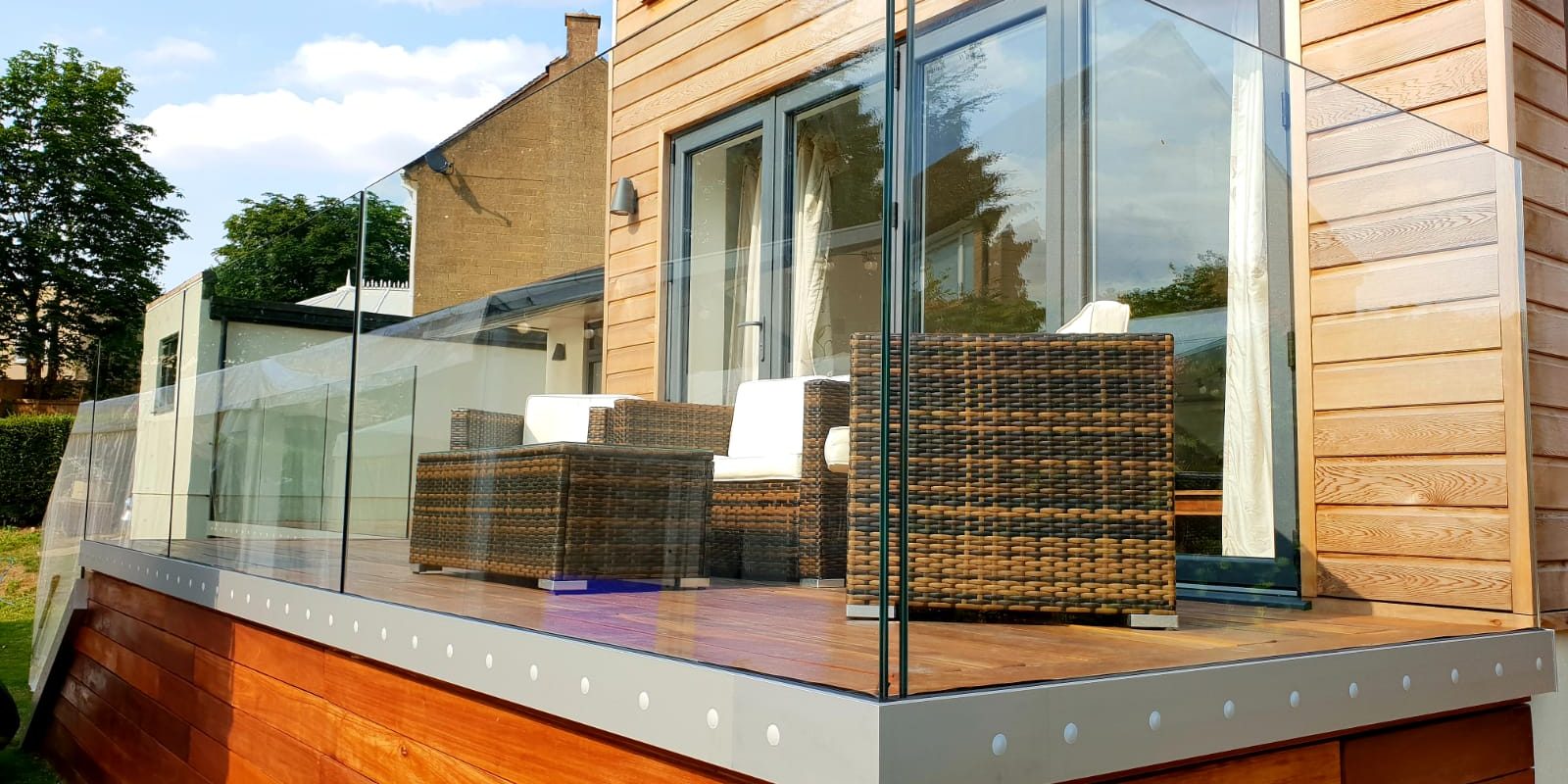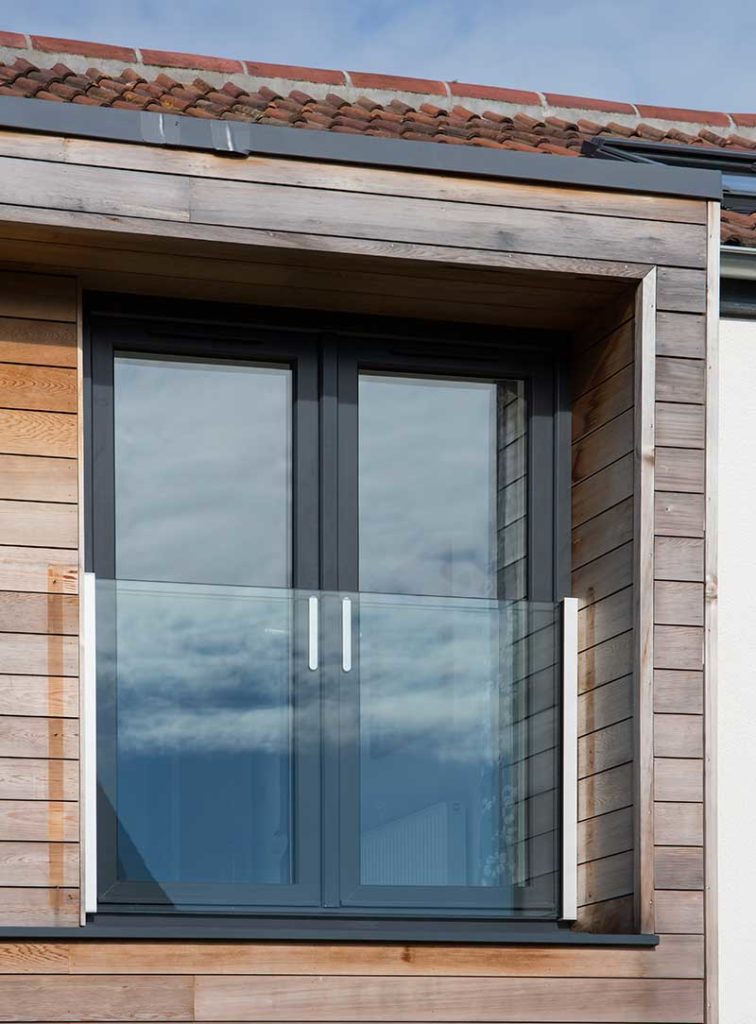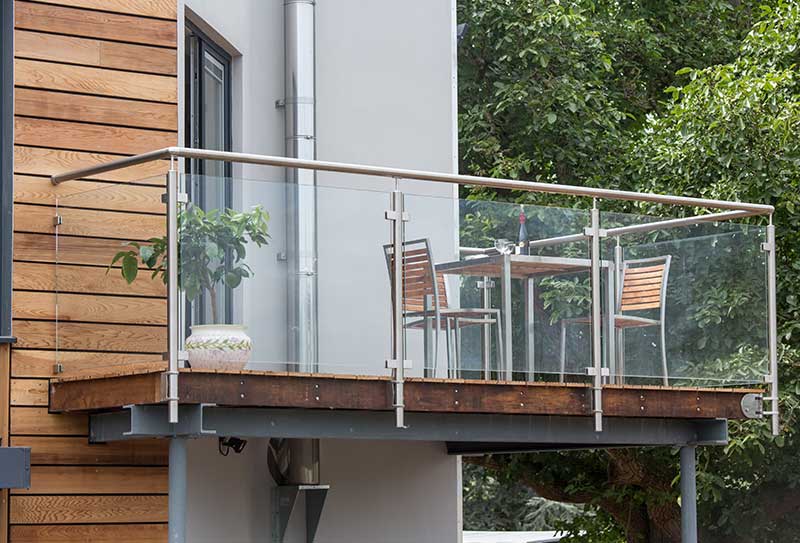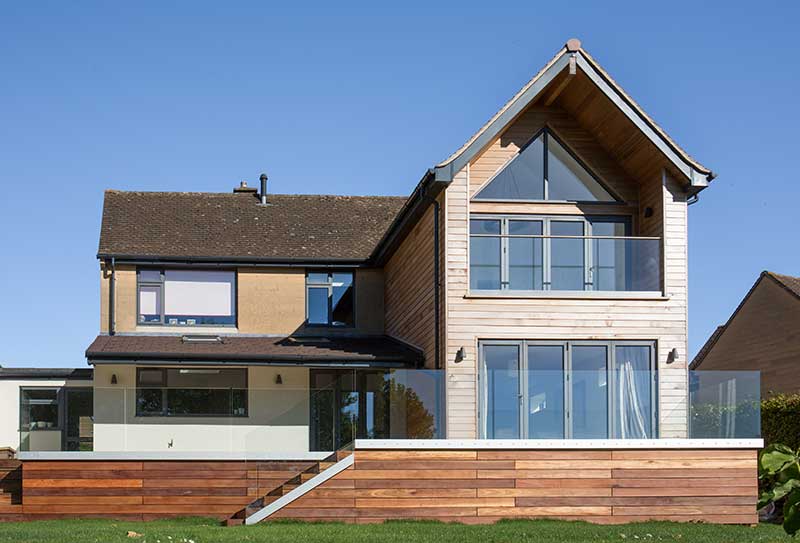Are you are thinking of upgrading your home? Or potentially even building your dream home from scratch? Well, there are many things that you can do to increase the impact of the outer façade of your property, some more practical than others. One of the additions you might consider is a balcony or external glass balustrade.
A great way of effectively increasing your floorspace – albeit outside – is by installing a balcony. Including a balcony allows you to either have that extra floorspace beyond your window or to have features such as French windows but without the risk of either you or a toddler falling out. This type of balcony, which consists of a series of railings, lets light and air through.
What’s a Glass Balustrade?
Balustrade balconies are experiencing somewhat of a renaissance. These small, sturdy, but highly practical window guards used to be quite simple affairs, but have now become much more than just guards.
Glass balustrades can be used in not only a practical way, but can also be highly artistic in nature, and that is what makes them attractive to home builders and DIY fanatics. A balustrade glass balcony can add a great touch of glitz to your property, as well as increasing the value of it too.
Balustrades and Juliets: A Distinction.
Just what are the major differences between a Juliet balcony and a balustrade? Can one be the same or are they always going to be completely separate? A balustrade can be flat against a wall, offering protection against openings such as French windows of floor level windows, and this type of balustrade would be a Juliet balcony. But balustrade balconies are not exclusively Juliet style, and they span to include balconies that can have floors to them giving outside areas. This can be from tiny ledges for a few plants or even large open spaces for wining and dining. Sometimes people may be interested in ‘walk-out’ Juliet balconies, but these are not your classic Juliet balconies by definition. These kinds of installations won’t be sufficient to put a table and chairs out, but you may be able to at least step outside.
So, supposing that you have decided to fit a balustrade to some of your exterior features, you will have to consider how it will affect your property and what kind of regulations you will have to comply with.
While the addition of a small balcony is not a complex piece of building work – with a Juliet balcony being the simplest – you will need to consult a structural engineer and a reputable builder. These small balconies can cost upwards of £300 – £400 to be installed and are by far the best option for flats, not least as your freeholder is less likely to object to something that is not a major structural change. If you are the freeholder, then there are usually no problems. Fitting a larger sized balcony as an afterthought is usually not recommended.
If you want to fit a balustrade, there is usually not a problem as this is, in its most basic form, simply that can be affixed to the walls either side of the opening, however, it might still be worth consulting a structural engineer in case the surrounding walls are not substantial enough.
Balustrade Regulations
There are very stringent regulations regarding the design and construction of balustrades and balconies, and you will need to comply with them. There are two different applications that must be distinguished between when determining the correct height to install a glass balcony or balustrade railing system; those installed internally on a staircase landing for example and those used externally, such as a Juliet balcony.
Internal applications require a minimum guarding height of 900mm from the finished floor level and this applies to all areas, stairs and landings alike. External applications however always require a minimum guarding height of 1100mm for landing areas but just 900mm for staircases and ramps. The regulations for essential guarding usually apply when the balustrade system protects a drop in levels of 600mm or above. In addition, any gaps in any railings are to be no more than 100mm so as not to allow anything to fall through accidentally.
Most balustrade balconies are a simple framework that is affixed to the surrounding wall with steel balustrades fixed in place. However, an increasing number of these types of balconies are coming with glass frontages that allow the owner to have their doors or windows open but still retain a good degree of privacy.
The glass used in structural balcony or balustrades should always be toughened and ideally should be laminated too to prevent it from shattering. If the glass is going to be a feature, there are two main types of glass balustrade guarding: framed and frameless designs. Fully framed balustrades use upright supporting baluster posts complete with a fixed handrail to give a safeguarding and in these applications, there is no requirement to use laminated glass. The same applies to most frameless designs where a handrail is also used as part of the structural components. However, the difference comes where a frameless glass balustrade does not use a handrail when guarding a fall in height over 600mm, toughened and laminated glass is always required.
Beautiful Balustrades for Your Home
So, we have seen that balustrade balconies can come in a huge range of designs that complement any style of building. There are now many different materials that can be used for the rails and balustrades, including steels, aluminium sections, stainless steel, PVC-coated metals, and wood. All of these have their own advantages and disadvantages, but they all have particular styles of property that they work well with. If you are thinking of fitting a balustrade balcony you should consider such things as the age of your property, the location, and its surroundings. Making something out of character will make it stand out and is not always a good thing.
Look at the character of your property and imagine what different designs might look like. It’s paramount to look at the style of your home and complement that with your choice, remembering that a Juliet balcony is a feature that’s viewed from both inside and outside of your property. If you have a period home, it will most likely suit a nice timber-framed door, with panelled glazing, and an iron railing with some twists and curves painted black.
More modern properties usually call more for something such as uPVC doors and fittings with a complementary railing system. Meanwhile, contemporary Juliet balconies are usually best fitted with aluminium doors, with a darker, low-profile balustrade, or even a frameless glass one with dark-finished balustrades. If the external architecture and interior design of your home are different, be prepared to try a fusion look with your balcony choices.
If well considered, balustrade balconies can be a very worthwhile addition to your property and can be installed for a relatively small cost. If you are considering fitting one, you will need to engage a good structural engineer and building contractor who has a strong background in such constructions.
There is little as good as waking up on a sunny morning and drinking your first cup of tea or coffee while gazing out of your new windows overlooking your balcony, so find out what’s going to look good in your home and get it fitted!





